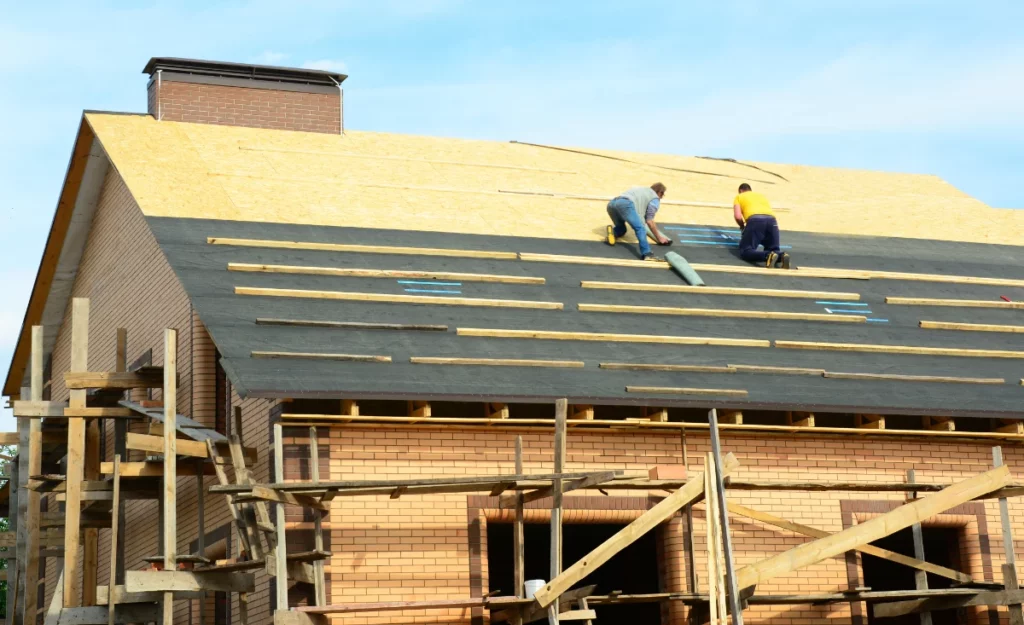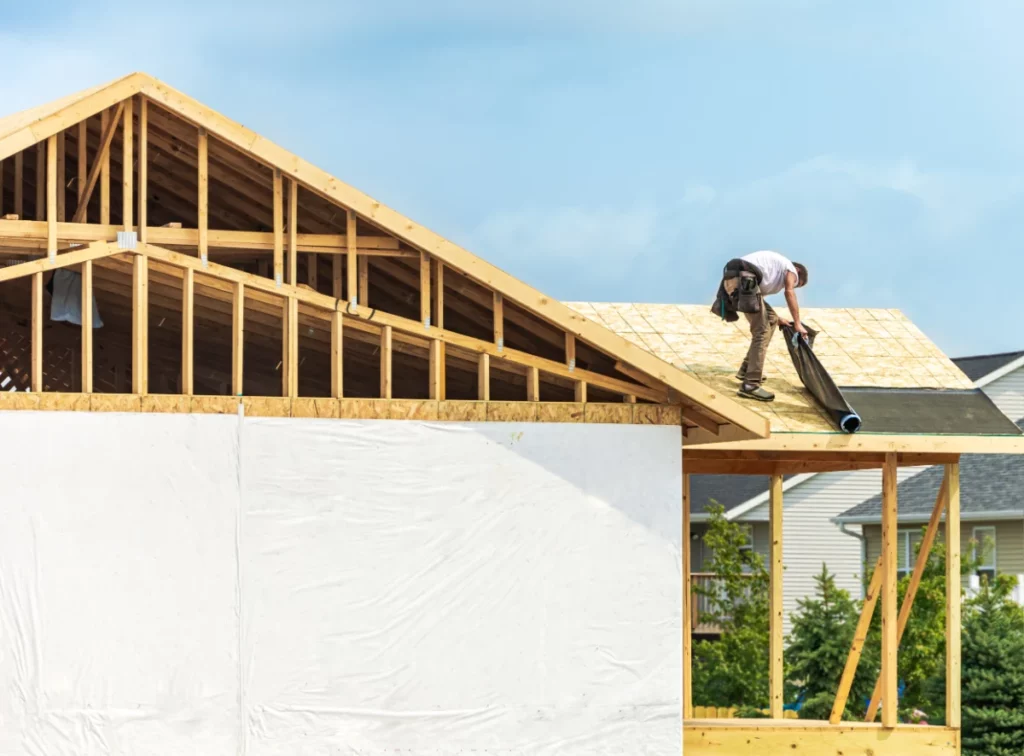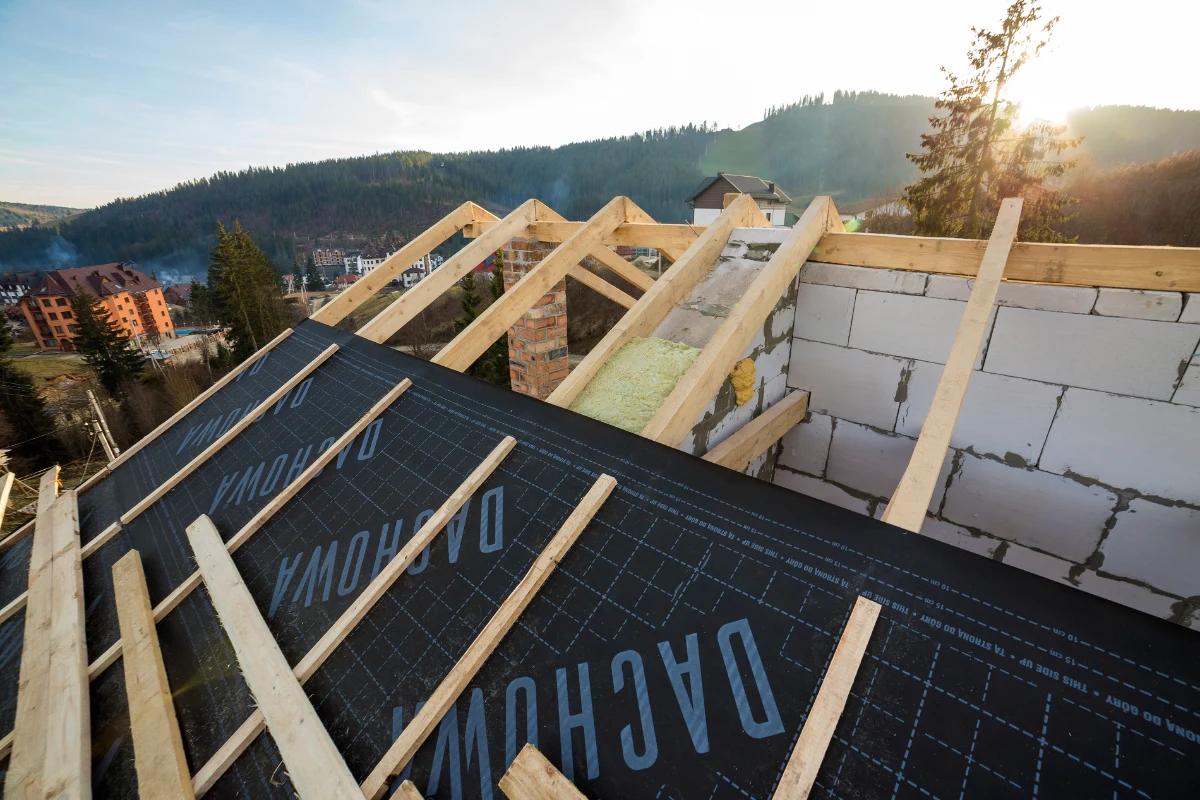Roofing can be a source of confusion for many homeowners. After all, most people only need to do one or just a few roofing projects in their lifetime.
One of the areas that people tend to be unaware of is roofing underlayment. Underlayment is a critical component of any roofing system. It provides a secondary layer of protection against water damage, and can help to extend the life of your roof.
What Is Underlayment?
The typical roof is more complex than it appears from the outside, comprising several layers than form the surface. Roofing layers include:
- The roof deck, or sheathing, provides the foundation for the rest of the roofing materials. It ties the roof trusses and joists together, giving the roof its shape and stability.
- Underlayment is a water-resistant material that is installed between the roof deck and the shingles. It is designed to protect the roof deck from moisture damage, and to help prevent leaks.
- The outer, visible layer of the roof is comprised of the shingles, tile, metal or other roofing material.
Types of Underlayment
Underlayment is typically made of felt or synthetic materials.
There are 3 main types:
Asphalt-Saturated Felt (Felt Paper)
Asphalt-saturated felt is the most common type of underlayment. It is made of a heavy paper that is saturated with asphalt. Felt paper is relatively inexpensive, and is easy to install. However, felt paper is not as durable as synthetic underlayment.
Rubberized Asphalt
Rubberized asphalt is a type of underlayment that is made of asphalt and rubber. Rubberized asphalt is more durable than felt paper, and is also more resistant to tears and punctures. However, rubberized asphalt is more expensive than felt paper.
Non-Bitumen Synthetics (Synthetic Felt Paper)
Non-bitumen synthetics are a type of underlayment that is made of synthetic materials, such as polyethylene or polypropylene. Non-bitumen synthetics are more durable than felt paper, and are also more resistant to tears and punctures. However, non-bitumen synthetics are more expensive than felt paper.
The best type of underlayment for your roof will depend on your budget, the climate in your area, and the type of roof you have. If you are on a budget, felt paper is a good option. If you live in an area with harsh weather conditions, rubberized asphalt or non-bitumen synthetics are a better option. If you have a metal roof, non-bitumen synthetics are the best option.
Individual manufacturers of roofing materials may offer a selection of underlayment designed for different types of homes and price points. For example, GAF offers Deck-Armor™, Tiger Paw™, FeltBuster®, Shingle-Mate®, and VersaShield®.

Benefits of Roofing Underlayment
Roofing underlayment offers a range of significant benefits that enhance the overall performance and protection of your roof. It serves as a crucial layer of defense between the roofing materials and the structural sheathing, providing numerous advantages that contribute to the longevity, durability, and efficiency of your roofing system.
Weather Protection
Acting as a backup layer, underlayment safeguards your roofing structure and the interior of your home from water damage, mold, and the need for costly repairs caused by heavy rain and extreme weather conditions.
Fire Safety
Underlayments that meet industry-standard compliances can providing an added layer of fire protection for your home and help your roofing shingles achieve their Class A fire rating.
Enhanced Curb Appeal
Roofing underlayment creates a smooth and even surface for installing roofing shingles, contributing to improved curb appeal and enhancing the overall aesthetics of your property.
Energy Efficiency
Roofing underlayment acts as an extra layer of insulation, effectively sealing your home from air leakage. This improved insulation helps regulate indoor temperatures and reduces the transfer of heat, leading to energy savings and lower utility costs in the long run.
Protection from Water Damage
In regions with heavy downpours like Florida, waterproofing underlayment plays a critical role in preventing water from entering and damaging your home by effectively sealing around the roof frame.
Extend the Lifespan of Your Roof
Without underlayment, the shingles are the only thing protecting your roof deck from moisture damage. If the shingles are damaged or worn, water can easily seep through and damage the roof deck. This can lead to leaks, mold, and other problems that can shorten the lifespan of your roof. The underlayment acts as a protective barrier for the roof deck, shielding it from potential damage caused by weather elements and mold growth.
Warranties
Some roofing manufacturers require the installation of underlayment to offer a warranty on their roofing materials. The specific requirements for underlayment installation vary from manufacturer to manufacturer and on the type of roofing material.
Peace of Mind
For homeowners, roofing underlayment offers peace of mind and confidence in the durability of their roofing system.

Installing Roofing Underlayment
Roofing underlayment is installed between the roof deck and the shingles. The installation is a relatively simple process, but it is important to follow the manufacturer’s instructions carefully.
An experienced roofer will follow these basic steps involved when installing roofing underlayment:
- Prepare the roof deck. The roof deck should be clean, dry, and free of debris. If the roof deck is damaged, it should be repaired before the underlayment is installed.
- Unroll the underlayment. The underlayment should be unrolled on the roof deck, starting at the eaves and working your way up. The underlayment should be overlapped by at least 6 inches.
- Secure the underlayment. The underlayment should be secured to the roof deck with roofing nails or staples. The nails or staples should be spaced every 12 to 18 inches.
- Flash the seams. The seams between the underlayment sheets should be flashed with roofing cement. This will help to prevent water from seeping through the seams.
Roofing underlayment is a crucial and often overlooked component of a properly installed roofing system. While it may not be visible after the main roofing material installation, its impact on the roof’s overall function should not be underestimated. Homeowners should pay careful attention to the type and thickness of underlayment chosen to ensure it meets the specific needs of the climate, geographic location, and roofing material being used.
The Best Roofing Company in Florida & Georgia
At Stronghold Roofing & Solar, we understand the value of using the right underlayment on all our roofing projects. We offer a full range of roofing services to homeowners and business owners, and we are proud to be the roofing company of choice for so many of our neighbors throughout the area.
Contact us today for a free estimate.










